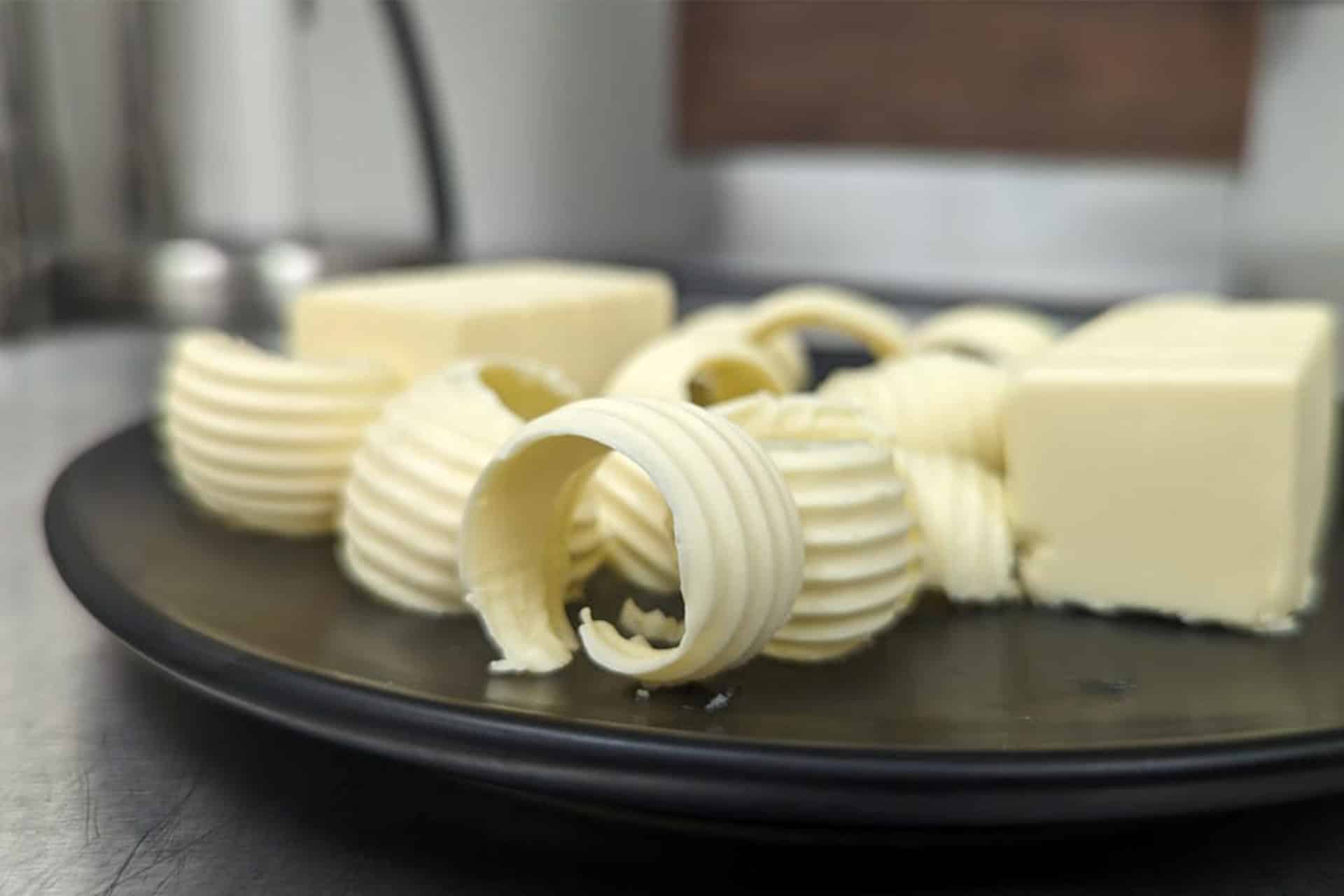- cross-posted to:
- vegan
- cross-posted to:
- vegan
A California-based startup called Savor has figured out a unique way to make a butter alternative that doesn’t involve livestock, plants, or even displacing land. Their butter is produced from synthetic fat made using carbon dioxide and hydrogen, and the best part is —- it tastes just like regular butter.



My thought was “I doubt you can make fat only with hydrogen and carbon”, but fats/lipids are literally hydrocarbons. Adding other elements changes the taste, so it isn’t necessary to have mammals anywhere in the production chain.
Very interesting and probably not the first time this is/has been done. It seems quite obvious.
It’s quite obvious at a theoretical level but not easy in terms of figuring out the actual process. A lot of science like that.
According to the savor team, it was quite easy for them:
I want to guess they are glossing over a complicated enzyme they created, or other form of reagent.
Yeah, they’re definitely glossing over a lot of things. They don’t even mention the source of co2 or even a real timeline.
That’s like saying you can build a nuclear bomb by smashing pieces of uranium together. Technically true, but it’s a lot more complicated than that.
This is not how chemistry works at all.
To start with, fatty acids also need Oxygen because of the COOH and OH group of the glycerin in fat. They are not hydrocarbons. You know what also is just made of Carbon, Oxygen and Hydrogen? Hundreds of thousands of molecules. All sugars and carbohydrates. If you allow for Nitrogen too, you could cover most molecules found in biological life.
None of this has any bearing on how difficult or complicated it is to synthesize these from more basic molecules like CO2 or H2.
Hopefully by producing a potentially profitable product, they’ll secure the funding to drive some carbon capture systems as well.
deleted by creator
Something I wondered with this, is that butter/margarine/similar need an emulsifier. They consist of basically 80% fat + 20% water, which would not normally mix, but then you add an emulsifier and they do.
There’s lots of different emulsifiers. In butter, it’s apparently mostly casein. My margarine lists lecithin and glyceride.
And well, looks like glyceride consists out of lots of H, C and O, so I’m guessing that’s probably what they’re using in this process…